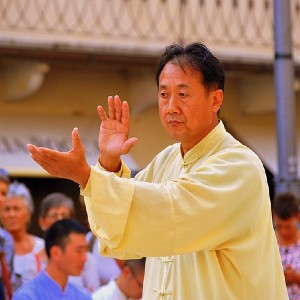Functional fitness and fall risk in older adults practitioners or non-practitioners of Tai Chi

Accepted: 27 April 2023
HTML: 10
All claims expressed in this article are solely those of the authors and do not necessarily represent those of their affiliated organizations, or those of the publisher, the editors and the reviewers. Any product that may be evaluated in this article or claim that may be made by its manufacturer is not guaranteed or endorsed by the publisher.
Authors
Tai chi is a fundamental tool that has a significant influence on balance, motor function and fear of falling among older adults. The objective of the study was to verify functional fitness and fall risk in older adults (OA) practitioners and non-practitioners of Tai Chi. An ex-post-facto study was carried out in practicing and non-practicing OA of Tai chi. The sample selection was non-probabilistic (convenience). Thirty-one adults with an age range of 65 to 80 years were studied. Two study groups were formed: Group practicing Tai Chi [GPT (n= 15 subjects)] and Group not practicing Tai Chi [GNPT (n= 16 subjects)]. Age, weight, height, waist circumference were assessed. Body mass index (BMI) and fat mass (FM) were calculated. Five functional fitness tests were assessed: biceps curl (30sec), Chair stand (30sec), agility (sec), 2min walk (#rep) and 6min-1 walk (m). Fall risk was measured using a 13-item scale. The GPT showed better performance in all five functional fitness tests (biceps curl, Chair stand, agility, 2min gait and 6min walk) compared to the GPT. The effect size (ES: ~0.20 to 0.48) and Cohen's d (~ 0.39 to 1.10) between both groups were medium to large. There were also differences between the mean values in fall risk between both groups (GNPT: 2.1±1.7points and GNPT: 4.7±1.9points, p<0.05). This study demonstrated that the group of OA practicing Tai Chi presented better levels of functional fitness and less risk of falling in relation to their counterparts who did not practice Tai Chi. These results suggest including this type of old-time exercise in physical activity programs that promote functional fitness wellness and fall prevention among OA
How to Cite

This work is licensed under a Creative Commons Attribution-NonCommercial 4.0 International License.
PAGEPress has chosen to apply the Creative Commons Attribution NonCommercial 4.0 International License (CC BY-NC 4.0) to all manuscripts to be published.

 https://doi.org/10.4081/ejtm.2023.11155
https://doi.org/10.4081/ejtm.2023.11155



